Protected: Acorn (Winter) Squash Soup: Health-Boosting Comfort Food
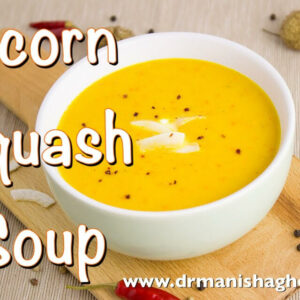
Dr. Manisha Ghei November 19th, 2017
Posted In: Blog Post, Food, Functional Nutrition, Recipes, Soups
Tags: acorn squash, acorn squash soup, antioxidant, immune boosting, recipe, soup recipe, squash, winter squash
8 Essential facts about Omegas -Essential Fatty Acids (EFAs)

Essential Fatty Acids (EFAs) – Essential to Brain Health
I’m often asked what are the few nutrients I think are absolutely imperative and essential for good health especially in this modern world. One of the top nutrients in my list is Omega Essential Fatty Acids. Every patient who comes into my practice gets their Omega 3 levels and the ratio of Omega 3s to other omegas, like 6s, 9s etc tested and an appropriate individualized diet and supplementation (if required) plan created for them.
Decades of study and countless books have gone into exploring Omega-3 and the role it plays in our physical and mental health.
Here are 8 Essential Facts about this ESSENTIAL substance.
1. Omega-3 is called “essential” because it’s necessary for our health, but we cannot make it on our own.
2. One essential Omega-3 fatty acid is a substance called α-linolenic acid (ALA). Our body can use ALA to make two other essential fatty acids: DHA (docosahexaenoic acid) and EPA (eicosapentaenoic acid). However, we don’t make enough to meet daily needs for optimal health and the conversion of ALA to DHA and EPA is not efficient enough in most humans.
If you are deficient in Vitamin Bs of various kinds, Vitamin C, minerals like Magnesium and zinc you will not optimally convert ALA into DHA and EPA.
Have your physician test you for optimal levels of these nutrients and adjust your dietary plan and your supplement schedule to optimize the levels of these key supportive nutrients.
You may benefit from supplementation with:
- a B complex containing activated forms of B vitamins,
- a highly absorbable and bio-available form of magnesium (that does not cause diarrhea)
- a highly absorbable and bio-available form of zinc
- a highly absorbable and bio-available form of Vitamin C with bioflavanoids
- A comprehensive Multivitamin and Multimineral supplement. If you’re a menstruating woman, you may wish to take the version that contains iron as well.
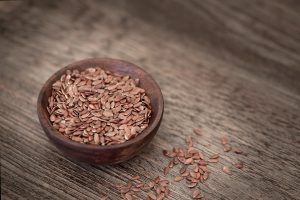
3. Omega-3 is critical for preventing symptoms of chronic illness, such as inflammation, chronic fatigue, joint and muscle pain and poor elimination of toxins.
4. The brain thrives on Omega-3. Without enough, we can experience learning problems, memory issues, brain fog, ADHD symptoms and other neurological symptoms. Proper levels help protect us from Alzheimer’s Disease. Balanced omega fatty acids are crucial in cardiovascular health and healthy blood pressure maintenance and insulin and blood sugar balance.
5. Food is a great source of Omega-3. Consider fatty fish like salmon, tuna, halibut, krill, flaxseed, walnuts and chia seeds (the latter 3 however give us ALA which needs to be converted to DHA & EPA).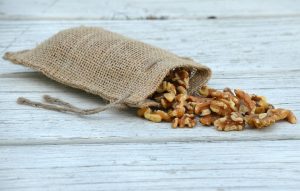
6. It’s difficult to get sufficient amounts from food alone. Most Americans consume a daily average of 130 mg EPA + DHA – way below the recommended 1000-2000 mg. Consider adding a supplement to your diet. The Omega 3 supplement my family and I use, and I recommend to patients in my practice is International Fish Oil Standards (IFOS) five-star certified, which assures the highest level of purity, stability, and potency in fish oils. Each dose of this concentrated fish oil provides a whopping 900 mg of EPA and DHA in one softgel. Always check the the EPA and DHA content at the back of your bottle, as many times manufacturers will list a certain mg of fish oil on the front label of the fish oil bottle and it does not provide the accurate amounts of EPA and DHA that each serving has. This can mislead the buyer.
7. Acquiring Omega-3 must be done in a focused fashion, with attention paid to the balance between Omega-3 and Omega-6 (a group of fatty acids linked to increased inflammation). An imbalance can adversely impact well being and brain health.
8. Not all Omega 6s are bad! One known as DGLA (Dihomo-gamma-Linoleic Acid) is an antiinflammatory Omega 6 fatty acid. Other ones known as LA (Linoleic Acid) and AA (Arachindonic Acid) can be inflammatory in high amounts or when not in balanced amounts compared with DGLA. 
In my testing I look at individual levels of these key Omega 3 and 6 Fatty Acids but also the ratio of Linoleic to DGLA as seen in the image above. A simple blood test can give me all of the above information.
Consult your Functional Medicine and / or Integrative Holistic Medicine physician to assess your intake, test your levels, and explore ways to help you protect your health and cognitive function with essential Omegas.
References:
-
University of Maryland CAM Database Online. “Omega-3 Fatty Acids” Accessed 7 Nov 2016: http://umm.edu/health/medical/altmed/supplement/omega3-fatty-acids
-
Assisi A., Banzi R., Buonocore C., et al. “Fish oil and mental health: the role of n-3 long-chain polyunsaturated fatty acids in cognitive development and neurological disorders.” Int Clin Psychopharmacol. 2006 Nov;21(6):319-36. Accessed 7 Nov 2016: https://www.ncbi.nlm.nih.gov/pubmed/17012979
-
Ricardo U., Dangour, A.D. “Nutrition in Brain Development and Aging: Role of Essential Fatty Acids” Nutrition Reviews (May 2006)64 (suppl 2) S24-S33; DOI: 10.1111/j.1753-4887.2006.tb00242.x http://nutritionreviews.oxfordjournals.org/content/64/suppl_2/S24
-
Bourre, J.M. “Effects of nutrients (in food) on the structure and function of the nervous system: update on dietary requirements for brain. Part 2: macronutrients”. J Nutr Health Aging. 2006 Sep;10(5):386-99. Accessed 7 Nov 2016: http://www.bourre.fr/pdf/publications_scientifiques/260.pdf
-
NutritionData.com. Foods Highest in Total Omega-3 Fatty Acids. Accessed 7 Nov 2016. http://nutritiondata.self.com/foods-012140000000000000000.html?maxCount=20
-
Freund-Levi Y, Eriksdotter-Jonhagen M, Cederholm T, et al. “Omega-3 fatty acid treatment in 174 patients with mild to moderate Alzheimer disease: OmegAD study: a randomized double-blind trial.” Arch Neurol. 2006 Oct;63(10):1402-8. Accessed 7 Nov 2016: http://www.utdallas.edu/~tres/papers/freund-levi.2006.pdf
The information offered by this blog is presented for educational purposes. Nothing contained within should be construed as nor is intended to be used for medical diagnosis or treatment. This information should not be used in place of the advice of your physician or other qualified health care provider. Always consult with your physician or other qualified health care provider before embarking on a new treatment, diet or fitness program. You should never disregard medical advice or delay in seeking it because of any information contained within this blog. © Praana Integrative Medicine & Holistic Health Center, LLC. All rights reserved
Dr. Manisha Ghei April 16th, 2017
Posted In: Blog Post, Food, Functional Medicine, Integrative Medicine
Tags: ADHD, allergies, antioxidant, arthritis, asthma, blood pressure, cancer, cholesterol, Chronic fatigue syndrome, dementia, Diabetes Mellitus, fibromyalgia, functional medicine, healthy heart, heart healthy foods, Inflammation, Insulin, Memory, nutrition, Omega 3, vascular health
I Love Those Lentils!

Coming from an Indian heritage, lentils have been an important part of my daily meals all my life. I absolutely love them and really wanted to share their beneficial properties with all of you readers and foodies!
Around the world, people enjoy the health benefits of lentils, part of a group of proteins known as pulses, which also includes beans, peas, chickpeas. Naturally gluten-free, lentils are rich in dietary fiber, protein, calcium, potassium, zinc, and iron. They help support lower cholesterol levels and are a great addition to the diet especially for people diagnosed with blood glucose/ blood sugar disorders.
Prior to the use of pharmaceutical medicines, lentils were used to deal with diabetic conditions. When included with a meal, the high fiber content helps prevent blood glucose from rising rapidly after eating. Although calorie dense (230 cal/ one cup serving), lentils are low in fat and very filling – you won’t be hungry after a lentil meal! I can vouch for that one from extended personal experience!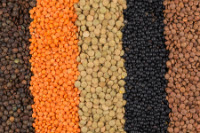
You can find lentils in the bulk bin aisle or in prepackaged containers.
A few tips on purchasing and cooking:
When purchasing in bulk, try to buy organic and make sure there is no moisture in the bin or in the packaging. Look for whole, not cracked lentils. Store them in an airtight container in a cool, dark and dry place. They will keep up to a year. When buying canned lentils, watch for added salt or other preservatives. though I don’t recommend canned food AT ALL, just for your information, unlike other canned veggies, lentils do not lose much of their nutritional potency.
Lentils are easy to prepare (I do like to pre-soak them but if in a hurry, can cook without presoaking unlike other dry beans). Wash and strain lentils under cool water before cooking. You can boil lentils (I like to use my pressure cooker as a matter of habit, but you can use an Instant Pot as well if you have one) and store in the fridge for later use in casseroles, soups, rice or pasta dishes, salads, spreads/hummus, or soups. Cooked lentils stay fresh in the fridge in a covered container for about three days.
Write in the comments if you liked these tips and how you use lentils and share some of your favorite recipes if you can so all of us can benefit.
I look forward to hearing from you!
References:
-
Future of Food: Pulses & Nutrition. Accessed on 6 Sep 2016: http://pulses.org/future-of-food/pulses-nutrition
-
Video: NutritionFact.org. “Diabetics Should Take Their Pulses” http://nutritionfacts.org/video/diabetics-should-take-their-pulses/
-
Helmstadter, A. “Antidiabetic drugs used in Europe prior to the discovery of insulin.” Pharmazie (2007) 62(9):717 – 720. http://www.ncbi.nlm.nih.gov/pubmed/17944329
-
MedicalNewsToday.com. Accessed 6 Sep 2016: http://www.medicalnewstoday.com/articles/297638.php
-
World’s Healthiest Foods: Lentils. Accessed 6 Sep 2016: http://www.whfoods.com/genpage.php?tname=foodspice&dbid=52
-
Singhal, P., Kaushik, G., Mathur,P. “Antidiabetic potential of commonly consumed legumes: A review.” Crit Rev Food Sci Nutr (2014) 54(5):655 – 672. Accessed 6 Sep 2016: http://www.ncbi.nlm.nih.gov/pubmed/24261538
-
Thompson, S.V., Winham, D.M., Hutchins, A.M. “Bean and rice meals reduce postprandial glycemic response in adults with type 2 diabetes: A cross-over study.” Nutr J (2012) 11:23. Accessed 6 Sep 2016: http://www.ncbi.nlm.nih.gov/pubmed/22494488
-
MindBodyGreen.com. “7 Health Benefits of Lentils” Accessed 6 Sep 2016: http://www.mindbodygreen.com/0-5488/7-Health-Benefits-of-Lentils.html
Image attribution: rtsubin/bigstockphoto.com
The information offered by this blog is presented for educational purposes. Nothing contained within should be construed as nor is intended to be used for medical diagnosis or treatment. This information should not be used in place of the advice of your physician or other qualified health care provider. Always consult with your physician or other qualified health care provider before embarking on a new treatment, diet or fitness program. You should never disregard medical advice or delay in seeking it because of any information contained within this blog. © Praana Integrative Medicine & Holistic Health Center, LLC. All rights reserved
Dr. Manisha Ghei February 19th, 2017
Posted In: Blog Post, Food, Integrative Medicine, Recipes
Tags: blood sugar, cholesterol, Diabetes Mellitus, Fiber, functional medicine, healthy heart, heart health, heart health month, heart healthy foods, heart healthy recipe, lentils, mindful eating, nutrition, recipe
Have Diabetes? Try Bitter Melon (Momordica charantia)
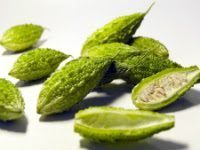
A cousin of watermelon, cucumber and pumpkin, Bitter Melon is shaped like a cucumber, only larger with lighter green and more gourd-like skin. In tropical cultures, where it’s cultivated, bitter melon is used to support digestion because of its ability to break down carbohydrates. When using for medicinal purposes, the entire plant can be used, dried or fresh, from leaves and stems to the actual juice.
Holistic physicians and researchers are interested in Bitter Melon for its effect on blood glucose levels in patients with diabetes mellitus. Chemicals in the extract act similar to insulin. A number of studies have found that bitter melon juice, fruit and dried powder have a moderate effect on lowering blood glucose. In other studies, a “plant insulin” injection given to patients with Type-1 diabetes showed a decrease in blood glucose. The decrease was not as significant for patients with Type-2 diabetes, but there was a decline in blood glucose levels compared to a control group. It seems that source and type of preparatio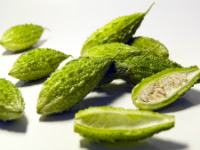 n, as well as individual patient factors, may play a role in the effect of bitter melon on diabetes, which will inspire further research.
n, as well as individual patient factors, may play a role in the effect of bitter melon on diabetes, which will inspire further research.
In India, bitter melon is used to make different vegetable preparations. Juicing is another way to utilize its beneficial properties but since it is very bitter, I like to use some raw honey, beets, carrots and green apple with it. You can also blend bitter melon into various foods and enjoy it several times a week when it is in season.
Although considered relatively safe, consult your holistic practitioner to determine the appropriate type and amount to use for your particular needs. If you are pregnant or nursing, only use the supplement under the care of a qualified practitioner.
References:
-
Basch, E. et al, “Bitter Melon (Momordica charantia): A Review of Efficacy and Safety” American Journal of Health-System Pharmacy (2003). Web: 6 Sep 2016: http://www.ajhp.org/content/60/4/356.short
-
Shane-McWhorter, L. “Dietary Supplements for Diabetes: An Evaluation of Commonly Used Products.” Diabetes Spectrum (Sep 2009), 22 (4) 206-213; DOI: 10.2337/diaspect.22.4.206 http://jn.nutrition.org/content/133/4/1088.short
-
Fuangchan, A., et al,. “Hypoglycemic effect of bitter melon compared with metformin in newly diagnosed type 2 diabetes patients.”Journal of Ethnopharmacology (Mar 2011) 134 2: 422-428. Accessed 6 Sep 2016: http://dx.doi.org/10.1016/j.jep.2010.12.045 http://www.sciencedirect.com/science/article/pii/S0378874110009219
-
National Bitter Melon Council. http://bittermelon.org/eat/cookingbittermelon
Image attribution: oddief1/bigstockphoto.com
The information offered by this blog is presented for educational purposes. Nothing contained within should be construed as nor is intended to be used for medical diagnosis or treatment. This information should not be used in place of the advice of your physician or other qualified health care provider. Always consult with your physician or other qualified health care provider before embarking on a new treatment, diet or fitness program. You should never disregard medical advice or delay in seeking it because of any information contained within this blog. © Praana Integrative Medicine & Holistic Health Center, LLC. All rights reserved
Dr. Manisha Ghei February 19th, 2017
Posted In: Blog Post, Food, Integrative Medicine, Recipes
Tags: Bitter Melon, Diabetes Mellitus, Food, functional medicine, Functional Nutrition, heart healthy recipe, Insulin Resistance, nutrition, recipe, Vegetable
Protected: Spiced Pumpkin Bread: A Fall Favorite

Dr. Manisha Ghei February 28th, 2016
Posted In: Blog Post, Food, Functional Nutrition, Recipes
Tags: antioxidant, Bread, Pumpkin, recipe, Spiced Pumpkin Bread, spices
Protected: Pumpkin: Not just for Halloween decor!

Dr. Manisha Ghei February 28th, 2016
Posted In: Blog Post, Food, Functional Nutrition
Tags: antioxidant, B vitamins, beta carotenes, Dietary Fiber, Fall, Flavonoids, Halloween, nutrient, nutrition, Pumpkin
Tips for Karva Chauth: Traditional Indian Day of Fasting, Love, Celebration & Rejuvenation


Karva Chauth is an ancient tradition practiced by Hindu women especially in Northern India. During this day which involves a fasting ritual, the woman prays for her husband’s good health and long life. It is a day of celebration of love and togetherness, and of gratitude for all the blessings.
After fasting for the entire day, women dress up in colorful traditional clothing and jewelry in the evenings and pray together in a group before sunset, but eating only after sighting the moon in the presence of their husbands in the night.

The visualization of the moon is a big, but fun challenge for all in the household and community. The mischievous moon is most evasive that night!
This day of fasting and prayer incidentally coincides with the change of the season and the cooling of the weather outside. It is an excellent practice as it detoxifies the body as well as the mind, and what better time to do it than at the change of the season.
Biologically speaking, women are practicing intermittent fasting in this tradition. This allows the body, but especially the gastrointestinal system (including the liver) time to rest and release toxic material (Ama, a term for toxins in Ayurveda), and stimulates body organs to rejuvenate and function better. Do remember that during the fast, there is release of a variety of toxins from the body tissues and this can lead to symptoms of aching, fatigue, brain fog, headache and irritability.
It is better to prepare for the day of fasting by starting to clean up your eating habits from a week before the day of the actual fast. This includes giving up alcohol intake and reducing caffeine. Being prepared will result in less adverse symptoms during the actual fasting period.
A few words of caution:
- If you have an illness like cancer, heart disease, kidney disease or a current infection, fasting may or may not be appropriate for you, so always seek medical advice for your unique situation.
- If you are a diabetic, and on either oral medication or insulin for it, please make sure you eat intermittently and/or change your medication schedule on the day of fasting.
- If you are pregnant please do make sure you are consuming fresh fruits and veggies and water or lemonade during the day.
Always consult with you physician whether it is advisable for you to fast at all.
Tips for the morning of the Karvachauth fast:
Traditionally women eat Sargi (a snack) after prayers and before sunrise on the day of the fast. Try to eat protein rich foods, and not eat a high sugar or carbohydrate laden meal. The latter will cause blood sugar fluctuations during the day which will make you more hungry and irritable. Protein, on the other hand, stabilizes mood and blood sugar keeping you full longer.
Nuts are a great option as they not only contain protein but also have excellent essential fats which nurture the brain and body throughout the day.
Make sure to hydrate very well in the morning especially if you follow a strict “no-water” fast!
The fun part:
Remember fasting is not just a ritual for the body, it is also rejuvenation for the mind and our opportunity to return to the wholeness of our souls. It is your time to relax & regenerate! So make the most of it!

A few tips for relaxation & rejuvenation:
- Listen to soothing music,
- Practice meditation or mindfulness,
- Try pranayama (breathing techniques),
- Try restorative yoga techniques or corpse pose (Shavasana) with the intention to heal the body, mind and soul,
- During the day if you have the luxury to be off work (or at least take half a day off!), try to pamper your self with a spa massage or at least do a self-massage (self -abhyanga)
- Don’t over-exert physically or mentally. Read your favorite book.
- If you’re ok with consuming water during the fast, sip some chamomile tea or other herbal teas
- Take a warm bath with a few drops of your favorite essential oils, especially if you feel fatigue, headache, or body aches.
- If nothing else, take a nap or just go see a movie with your friends.
Celebrate YOU!
This is your chance!
Tip on breaking your fast:
After the evening puja (prayer typically done with a gathering of friends), start with a glass or two of room temperature or luke-warm water. You can even add a little lemon, himalayan salt, and honey to the water. Natural, unsweetened coconut water is also a great option for slowly introducing electrolytes back into the body.
I find most women craving for tea or coffee, but those probably are not good ideas as they can cause gastric distress and even nausea.
I would also not recommend consuming any ice cold fluids.

Typically the moon is notorious for playing hide and seek within the clouds on the day of Karva Chauth! Once you’re fortunate enough to having a viewing (hopefully an early one!), follow these tips to introduce food after your fast in a healthy way:
After the moon is out and finally the fast is broken, please venture slowly into eating again.
First add in some fresh fruits in small amounts. Then after a little while have your dinner.
Fresh home made yogurt or coconut kefir (if you are dairy sensitive) are great as they help in the digestion of nutrients which the body greatly needs after a full day of starvation.
Moog lentil soup (daal) with a little white basmati rice and ghee are great options along with some easy to digest well cooked vegetables.
Eating fried and oily foods may be counterproductive as those are harder to digest and our stomach’s digestive fire (agni, an Ayuvedic term) as well as our pancreas may not be ready for such heavy foods.
Finally enjoy and celebrate your time with family and friends!
Many of my patients over the years have asked me to advise them on some tips to fast safely, so I decided to write this blog. Hope you found it useful.
I would love to hear from you about your experiences and any other tips you may have…
Please share and reach me through my social media or email me through my website.
Image source: http://www.4to40.com/greetings/cards.asp?festivals=Karva_Chauth-Karwa_Chauth-163
websol November 20th, 2015
Tags: celebration, detox, detoxification, Fasting, Food, Hindu, India, Indian, Intermittent fasting, Karva Chauth, love, rejuvenation, tradition

